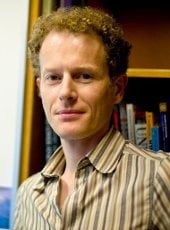
Carbon dioxide measured by a NASA satellite pinpoints sources of the gas from human and volcanic activities, which may help monitor greenhouse gases responsible for climate change. View full story here.

Carbon dioxide measured by a NASA satellite pinpoints sources of the gas from human and volcanic activities, which may help monitor greenhouse gases responsible for climate change. View full story here.
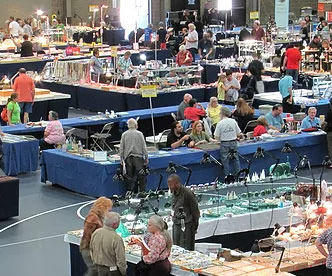
The A. E. Seaman Mineral Museum participated in the 73rd Annual Greater Detroit Gem, Mineral, & Fossil show held at Macomb Community College in Warren from Oct. 13 to 15, 2017. The show was sponsored by the Michigan Mineralogical Society.
Ted Bornhorst, executive director of the museum, installed two exhibits that were prepared by Chris Stefano, associate curator. One of these exhibits was titled “Supergene Oxidation: Making Colorful Minerals out of Dark Minerals” and fit with the show’s theme, “The Dark Side of Gems & Minerals.” The second exhibit was titled “Clay Canyon, Utah Variscite Nodules from the George B. Robbe Collection.” Robbe was a 1913 alum of Michigan Tech and was awarded an honorary doctorate from the University in 1961. His mineral collection was donated to the A. E. Seaman Mineral Museum in 1967. His personally-collected variscite suite is among the finest from this notable locality.
On Sunday Oct.15, the museum held a silent auction in collaboration with the Michigan Mineralogical Society and Bornhorst gave an invited lecture titled “Cubic Pyrite Crystals from Navajún, Spain.”
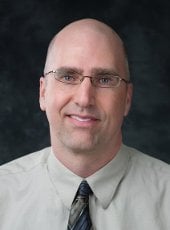
Mark Kulie (GMES/EPSSI/GLRC) presented an invited talk entitled “Snowfall in the GPM Era: Assessing GPM Snowfall Retrievals Using Independent Spaceborne, Reanalysis, and Ground-Based Datasets” at the 2017 NASA Precipitation Measurement Missions Science Team Meeting in San Diego, CA.
He also presented a poster entitled “Ground-Based Profiling Radar Applications for Spaceborne Snowfall Retrievals” at the same meeting.
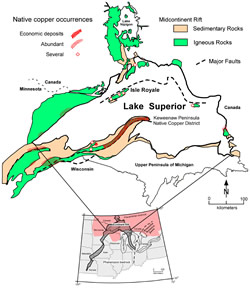 Ted Bornhorst, executive director of the A. E. Seaman Mineral Museum, and professor (GMES) recently published an article in Minerals – an Open access Mining and Mineral Processing Journal. Bornhorst’s article was titled “Copper isotope constraints on the genesis of the Keweenaw Peninsula native copper district, Michigan, USA” and was co-authored by Ryan Mathur, professor and chair of geology at Juniata College in Huntingdon, Pennsylvania.
Ted Bornhorst, executive director of the A. E. Seaman Mineral Museum, and professor (GMES) recently published an article in Minerals – an Open access Mining and Mineral Processing Journal. Bornhorst’s article was titled “Copper isotope constraints on the genesis of the Keweenaw Peninsula native copper district, Michigan, USA” and was co-authored by Ryan Mathur, professor and chair of geology at Juniata College in Huntingdon, Pennsylvania.
Minerals 2017, 7(10), 185; doi:10.3390/min7100185
The Keweenaw Peninsula native copper district of Michigan, USA is the largest concentration of native copper in the world. The copper isotopic composition of native copper was measured from stratabound and vein deposits, hosted by multiple rift-filling basalt-dominated stratigraphic horizons over 110 km of strike length. READ MORE
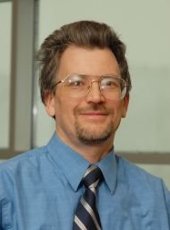
Aleksey Smirnov (GMES), has been elected a Fellow of the Geological Society of America (GSA), as elected by the GSA Council.
Established in 1888, the GSA is a global professional society with more than 26,000 members in 110 countries, all working to advance geoscience research and discovery. The society unites thousands of earth scientists, like Smirnov, to study the perplexity of our planet and share scientific findings.
Society Fellowship, the highest level of membership, is an honor bestowed on the best in the profession by election by the GSA council. GSA members are nominated by existing GSA Fellows in recognition of their distinguished contributions to the geosciences through such avenues as publications, applied research, teaching, administration of geological programs, contributing to the public awareness of geology, leadership of professional organizations, and taking on editorial, bibliographic, and library responsibilities.
In his nomination letter, John A. Tarduno, University of Rochester, wrote “Aleksey is recognized for his advances in fundamental rock magnetism and related innovative applications of paleomagnetism to solve geologic problems, especially concerning the nature of the early geodynamo and core.”
On being elected a Fellow, Smirnov says “I am truly honored to be joining others as a newly elected GSA Fellow”.
Smirnov has authored or coauthored 49 peer-reviewed journals and about 80 conference publications. He has been an associate editor for Journal of Geophysical Research since 2005.
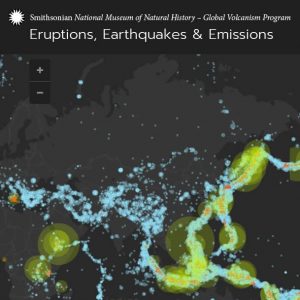 Smithsonian.com reported on the Global Volcanism Program, a study of the inner workings of volcanoes. Simon Carn (GMES) is one of the program’s researchers.
Smithsonian.com reported on the Global Volcanism Program, a study of the inner workings of volcanoes. Simon Carn (GMES) is one of the program’s researchers.
To illustrate these dynamic patterns, the Smithsonian Institution’s Global Volcanism Program, hosted within the National Museum of Natural History, has created a time-lapse animation of the world’s earthquakes, eruptions and emissions since 1960. Drawing from the first compiled database of sulfur emissions dating to 1978, the animations show how the seemingly random activity of volcanoes and earthquakes form consistent global patterns over time. Understanding those patterns gives researchers insight into how these dramatic events are entwined with the inner workings of our planet.
Earthquakes and volcanoes can conjure up images of widespread destruction. But for those who study Earth’s deepest reaches, like Elizabeth Cottrell, a research geologist at the Smithsonian’s National Museum of Natural History and director of the Global Volcanism Program, volcanoes are also “windows to the interior.”
“Global satellite monitoring of volcanoes will transform our understanding of gas fluxes from Earth’s interior to exterior in the coming decade,” says Cottrell, who has been working along with Michigan Tech researcher Simon Carn and data manager Ed Venzke to incorporate volcanic emissions into the Smithsonian database since 2012.
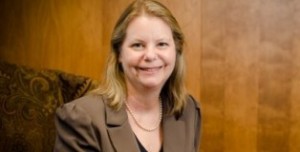
HER Magazine quoted Provost Jackie Huntoon in an article on the importance of same-gender mentors for women in STEM (science, technology, engineering and math).
A new study in the Proceeding of the National Academy of Sciences reveals that 100% of first-year women engineering students who had women peer mentors remained in the engineering program for the second year.
“I think that all students, not just women, and not just those in STEM, need mentors,” Huntoon says. “If you look like and think like the majority of your professors and classmates, it will be easy for you to find a mentor that you feel comfortable with.”
But, she believes that students in a minority group as a result of their gender, race, country of origin, etc., might need to put forth the extra effort to find the right mentor. “A good mentor is someone who can understand what you want and need and is willing to help you figure out how to achieve your goals,” Huntoon explains. “Mentors for women in STEM do not have to be women in STEM themselves – in fact, some of the best mentors I’ve ever had have been men, and not all of them have been scientists or engineers.”
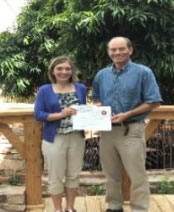
Katie Kring, a third-year student in geological engineering, has received the Andrew Mozola Scholarship from the Michigan section of the American Institute of Professional Geologists (AIPG). She won for her essay, “Why I Want to be a Geologist.”
Kring first discovered geology when her sophomore high school class visited a Superfund site. Most of the students were bored; Kring says she was fascinated. A summer geology program cemented her interest.
“This past spring semester was the most challenging semester of college I have undertaken to date,” Kring wrote in her prize-winning essay. “My courses included geophysics, structural geology, statics & mechanics of materials and petrology. While the classes were demanding, I did not waver from my desire to become a geologist. In fact, these classes only reinforced my passion.”
She plans to use the AIPG scholarship to fund summer field work. When she finishes her BS in geological engineering, she hopes to work in the mining field.
Students can apply for AIPG membership online.
By Jenn Donovan.
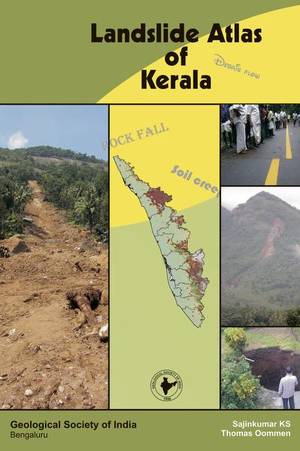 A geologist with the University of Kerala has collaborated with a U.S.-based geological engineer to prepare the Landslide Atlas of Kerala. The atlas, co-authored by K.S. Sajinkumar, Assistant Professor, Department of Geology, University of Kerala, and Thomas Oommen, Associate Professor, Michigan Technological University, U.S., depicts the spatial and temporal distribution of landslips and potentially hazardous locations in the Western Ghats.
A geologist with the University of Kerala has collaborated with a U.S.-based geological engineer to prepare the Landslide Atlas of Kerala. The atlas, co-authored by K.S. Sajinkumar, Assistant Professor, Department of Geology, University of Kerala, and Thomas Oommen, Associate Professor, Michigan Technological University, U.S., depicts the spatial and temporal distribution of landslips and potentially hazardous locations in the Western Ghats.
The atlas, prepared after an extensive mapping process that lasted for a year, has used the latest tools of Geographic Information Systems (GIS)
Public Works Minister G. Sudhakaran will formally launch the Landslide Atlas of Kerala at the Department of Geology on the Karyavattom campus of the university on September 19, 2017. The Geological Society of India is the publisher of the atlas.

Snehamoy Chatterjee (GMES/EPSSI) is the principal investigator on a project that has received a $127,810 research and development grant from NASA. Thomas Oommen (GMES) is the Co-PI on the project “Minerals and Rock Type Mapping Using Airborne Visible/Infrared Imaging Spectrometer-Next Generation (AVIRIS-NG) Data.” This is a one and a half year project.
By Sponsored Programs.